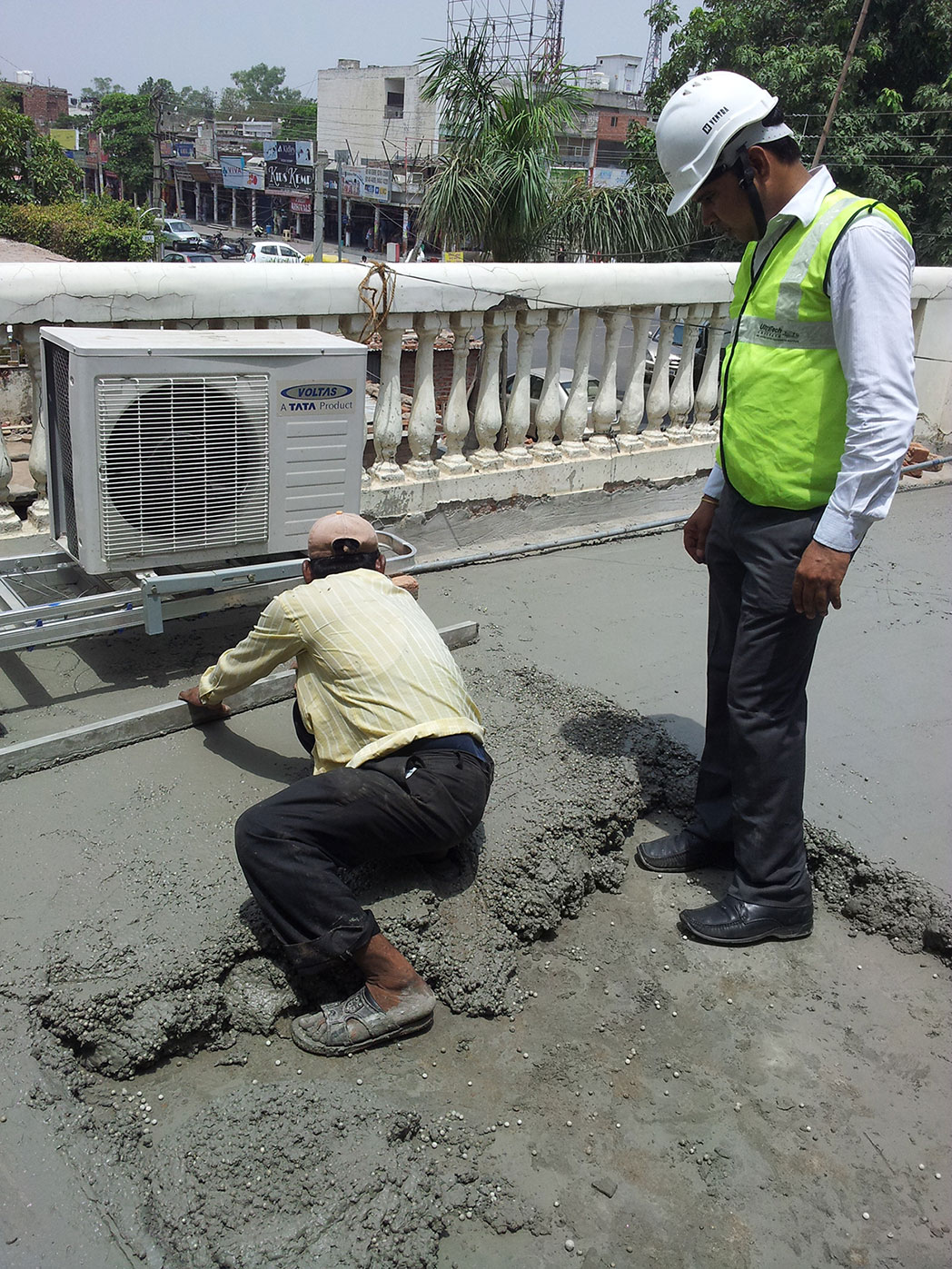Jagvir Goyal
Today, we can’t think of building a structure without using concrete. It has become the most commonly used man made building material. First of all, simple plain concrete was invented. It was followed by reinforced cement concrete (RCC). And then were invented many grades of concrete with varying strengths. Then we invented pre-stressed concrete, self-compacting concrete and many more types of it. Yet the innovators haven’t stopped experimenting with it. Now, many more avtaars of concrete are appearing in the market. Here, have a look:
Bucket concrete: Concrete has mostly been produced at the sites of construction themselves in view of very small setting time of cement. Invention of plasticizers and super-plasticizers led to production of Ready Mixed Concrete (RMC) which is produced at a site far from the site of construction, transported and poured in position. However, RMC is supplied only when large quantity of concrete is required. Now, to meet with smaller quantity requirements, bucket concrete has been invented.
Necessity of bucket concrete: Construction of a house or building demands large quantity of concrete which is either produced at site or supplied by RMC supplier. Problem arises for a house owner when he needs a small quantity of concrete to carry out some repair work while living in his house and finds it difficult to arrange cement, sand, coarse aggregate, concrete mixer etc to produce that small quantity required by him. To handle such situations, bucket concrete has been introduced which is supplied by manufacturers in small quantities.
Features of bucket concrete: Bucket concrete is produced by the manufacturers at their batching plant units by using superior quality cement, clean and graded sand, hard and silt free coarse aggregate, high performance plasticizers and limited quantity of clean potable water. It is then filled in small buckets, similar to 20 litre paint buckets, and delivered to the house owner. Each bucket contains 15 litres of concrete. The concrete is specially designed to meet customer requirements. It can thus be customised also.
Advantages of bucket concrete: Bucket concrete has many advantages. Firstly, it is difficult for a house owner to make arrangement of all material and labour requirements to produce a small quantity of concrete. Further, while producing a small quantity of concrete at site, its quality usually gets compromised. However, in case of bucket concrete, complete quality control is exercised by the supplier. If someone is living in a congested area, he can’t order for RMC as transit mixers can’t enter congested areas. In such circumstances also, availability of bucket concrete proves very useful. And then there is no wastage of cement or aggregates that are usually left at a site after completing the repair job.
Cost of bucket concrete: A bucket contains 15 litres of concrete. One such bucket costs about Rs. 200.00 only. A house owner may order for any number of buckets after making a rough assessment of concrete required by him. Generally, manufacturers lay condition of minimum 8 to 10 buckets as lesser quantity’s transportation is not viable to them. As the bucket concrete is supplied in ready to pour form, the repair job suddenly looks so easier with its availability.
Imprinted Concrete: The basic purpose of using concrete in structures has been to ensure their strength, durability and long life. Aesthetics has never been a factor to be considered in concrete mix design. Now, the manufacturers aspiring to produce innovative products have introduced imprinted concrete that not only retains the basic strength and durability of concrete but reflects beauty also. Imprinted concrete breaks the grey colour monotony of concrete and is made available in multiple colours.
Imprinted concrete production: Imprinted concrete is produced by using UV resistant colour hardeners in concrete. These hardeners retain the true shades of the colour for a very long time. A large variety of colours is used in imprinted concrete to allow the user to choose colours of his choice. Even customized shades are produced to meet customer’s requirements.
Use of imprinted concrete: Imprinted concrete can be used in all types of concrete flooring. Footpaths, parking bays, courtyards, driveways, patios can be provided with imprinted concrete. Thus, residential, commercial and industrial buildings, shopping malls, IT parks are finding it useful. However, its best use can be made in landscaping, walkways in gardens and parks as it looks beautiful in walkways and adds to the beauty of the landscape. When used in walkways, it doesn’t allow any growth of weed.
Site provision of imprinted concrete: Concrete is poured in the area of application such as pathways, driveways, walkways etc and then patterns and textures are pressed upon it before it is fully dry. Many types of patterns and textures are used to produce surfaces that look alike bricks, pavers, cobblestones, seashells and even wood. The finished surface is then protected by using a polythene sheet to avoid any damage to the surface before the patterned and textured surfaces are fully set. Unlimited textures, patterns, colours and designs can be used. Even glossy or matte finish requirement is fulfilled.
Maintenance of imprinted concrete: Imprinted concrete surfaces are maintenance free. Only precaution to be taken in their case is to avoid washing them with acids or alkalis to avoid chemical reaction. Rather clean water should be used. To maintain colour intensity, sealing should be got done at about 5 years interval.
Cost of imprinted concrete: Imprinted concrete is sold by manufacturers on per square feet basis. Its provision costs around Rs. 110 to Rs. 130 per sq feet for 3 inch thick concrete slabs or pathways.


